Physical Address
304 North Cardinal St.
Dorchester Center, MA 02124
Physical Address
304 North Cardinal St.
Dorchester Center, MA 02124
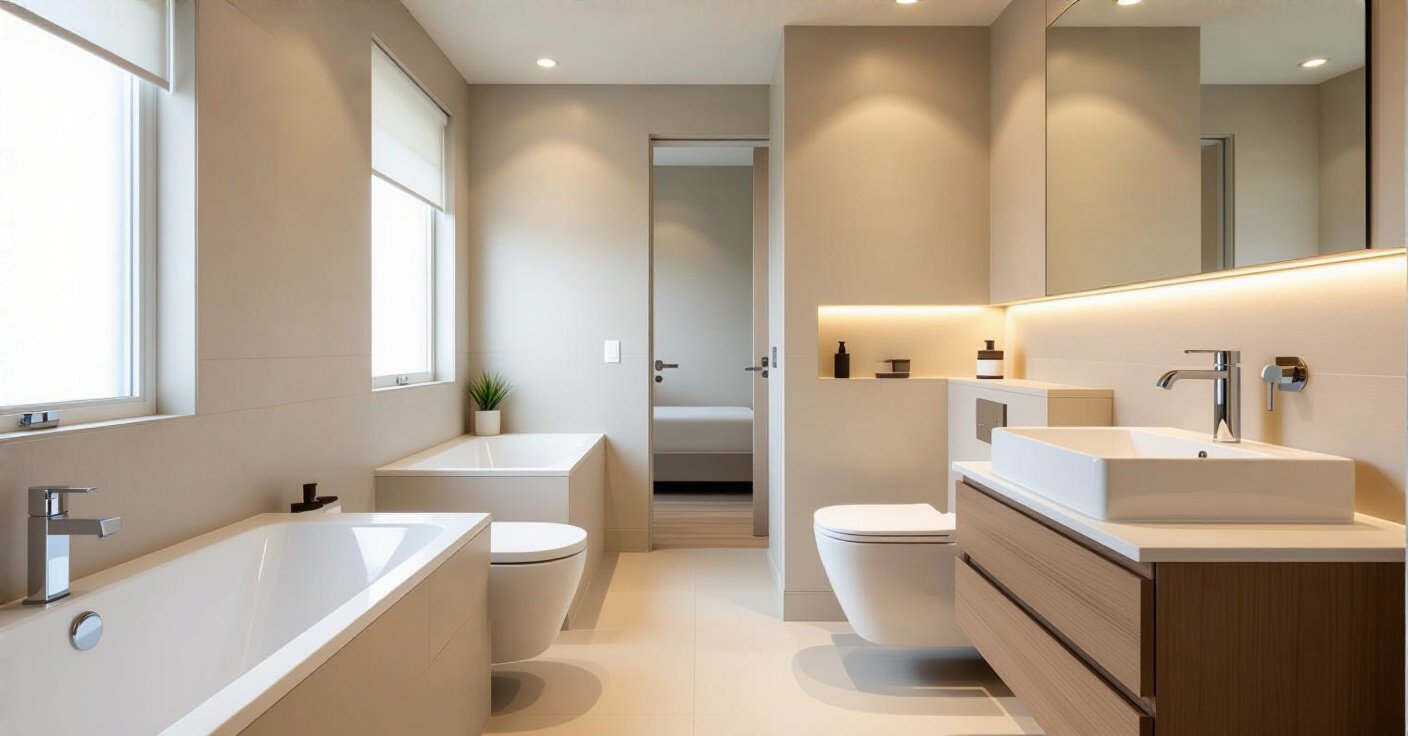
Renovating a historic bathroom? Avoid trends that clash with your home's character. Discover 23 practical ideas for blending timeless old-house charm with modern luxury.
Picture this: You’re standing in the bathroom of a house built in, say, 1925. The floor is covered in original, one-inch hexagonal tiles, a little worn but still perfect. There’s a hulking cast-iron pedestal sink under a window with wavy glass, and the walls have that particular solidness you only get from plaster and lath. It’s a space with a story. But the lighting is a single, grim bulb, there’s zero storage, and the only place for a shower is over the tub, clinging to a precarious curtain rod.
This is the central conflict for every owner of an old home. How do you bring in the comforts we now expect—good lighting, a functional shower, a place to put your toothbrush—without bulldozing the very soul of the house? The internet is full of articles telling you to install giant gray tiles and floating vanities. But here, we’re going to talk about how to do it right. We’re talking about making a bathroom that works for modern life and feels like it belongs in its historic home. Because you’re not just a homeowner; you’re a steward. And your job is to add the next thoughtful chapter to the house’s story, not erase the previous ones.
Before you pick a single tile or faucet, you have to get the bones of the room right. In an old house, this is everything. These homes were built for a different way of living, so we need to be clever and respectful when adapting the layout for the 21st century.
The bathrooms in older homes are often charmingly, or infuriatingly, small. That’s because they were often afterthoughts, carved out of hallways or bedrooms long after the house was built. The temptation is to blow out a wall, but that’s not always possible or desirable. The real artistry lies in working with the footprint you have. Forget what the big box stores tell you about standard vanity sizes; you have to think like a shipbuilder.
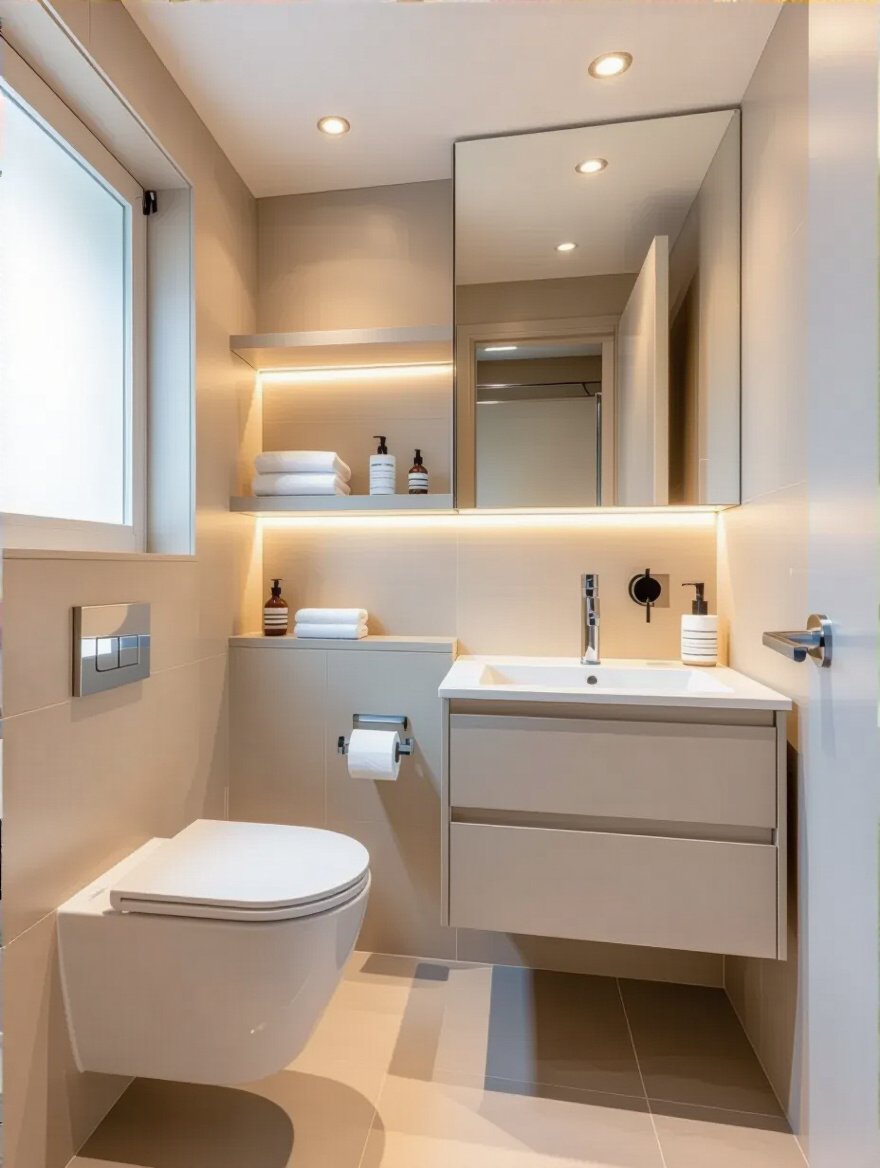
What really matters here is respecting the room’s given quirks and making every inch count. This means looking for clever solutions that feel integrated, not just crammed in. Think about a custom-built, shallow-depth vanity. Or a corner sink, a classic solution in the early 20th century for this very problem. It’s not about fighting the space; it’s about listening to it. The goal is to create a room that feels intentional and efficient, not like a collection of modern fixtures that lost a fight with the walls.
Once you’ve figured out how to make the overall space work, we can focus on the single biggest element: the shower.
Everyone wants a walk-in shower. They feel open and are fantastic for accessibility. But in a historic home, plopping a frameless glass box into a room full of classic details can feel jarring, like a spaceship landed in the wrong century. I once had a client who was minutes away from having his contractor jackhammer out an entire floor of original, intricate 1930s tile to create a zero-entry shower. We stopped him just in time. You don’t have to sacrifice heritage for function.
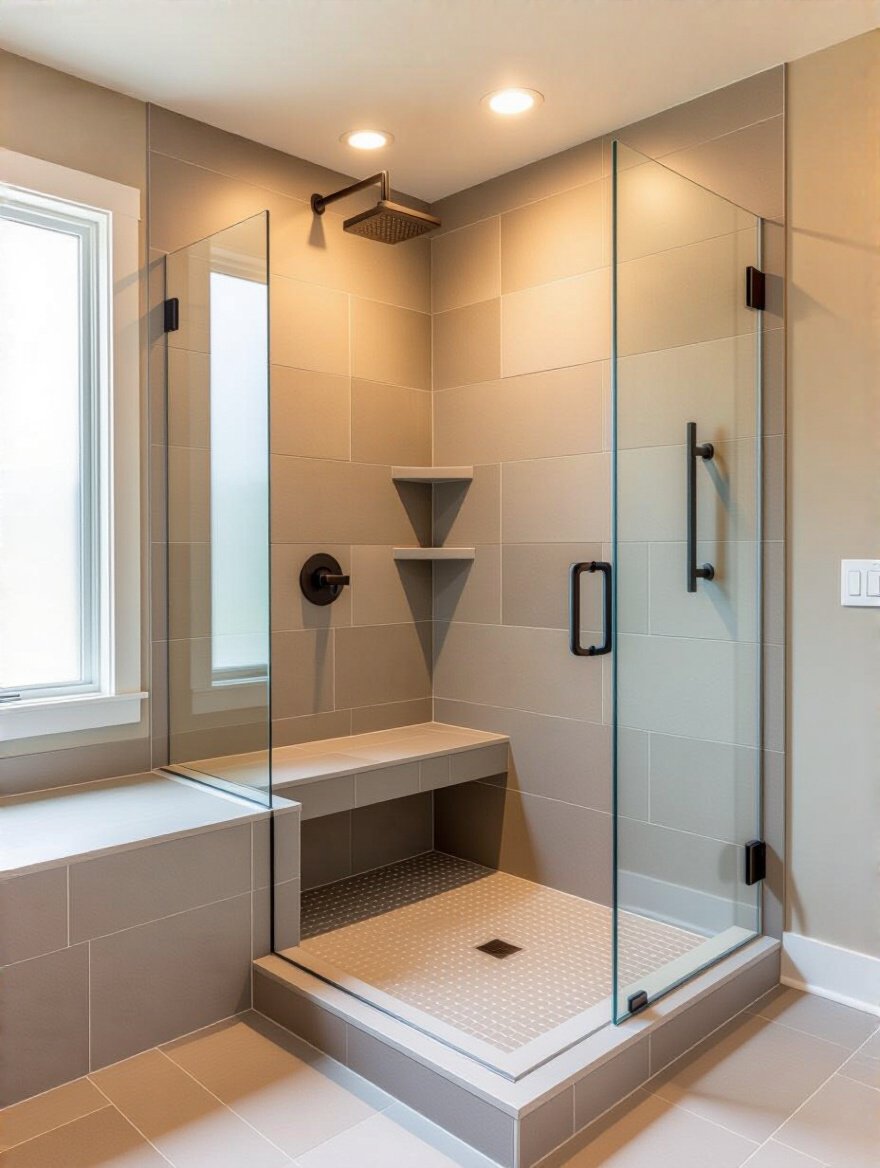
The key is to create the feeling of a walk-in shower while using materials that speak the home’s language. This might mean building a low-profile curb trimmed with simple, elegant tile that matches what’s already there. Or using classic subway tile on the walls and a timeless pattern like hexagon or basketweave on the floor. You can still use a glass door, but perhaps one with a frame in a finish like polished nickel or oil-rubbed bronze to give it some visual weight and connection to the other fixtures. It’s about creating a seamless transition, not a stark contrast.
Now, let’s address the fixture that gets the most… questionable advice online: the vanity.
Can we talk about floating vanities? Everyone says they make a space feel bigger, and they do. But let me be frank: a sleek, high-gloss, wall-hung cabinet looks absolutely alien in a Craftsman or Victorian bathroom. It’s a trend that completely ignores architectural context. You’re aiming for a bathroom that feels like a coherent room, not an Instagram set piece. The BS here is that there’s only one way to make a space feel “open.”
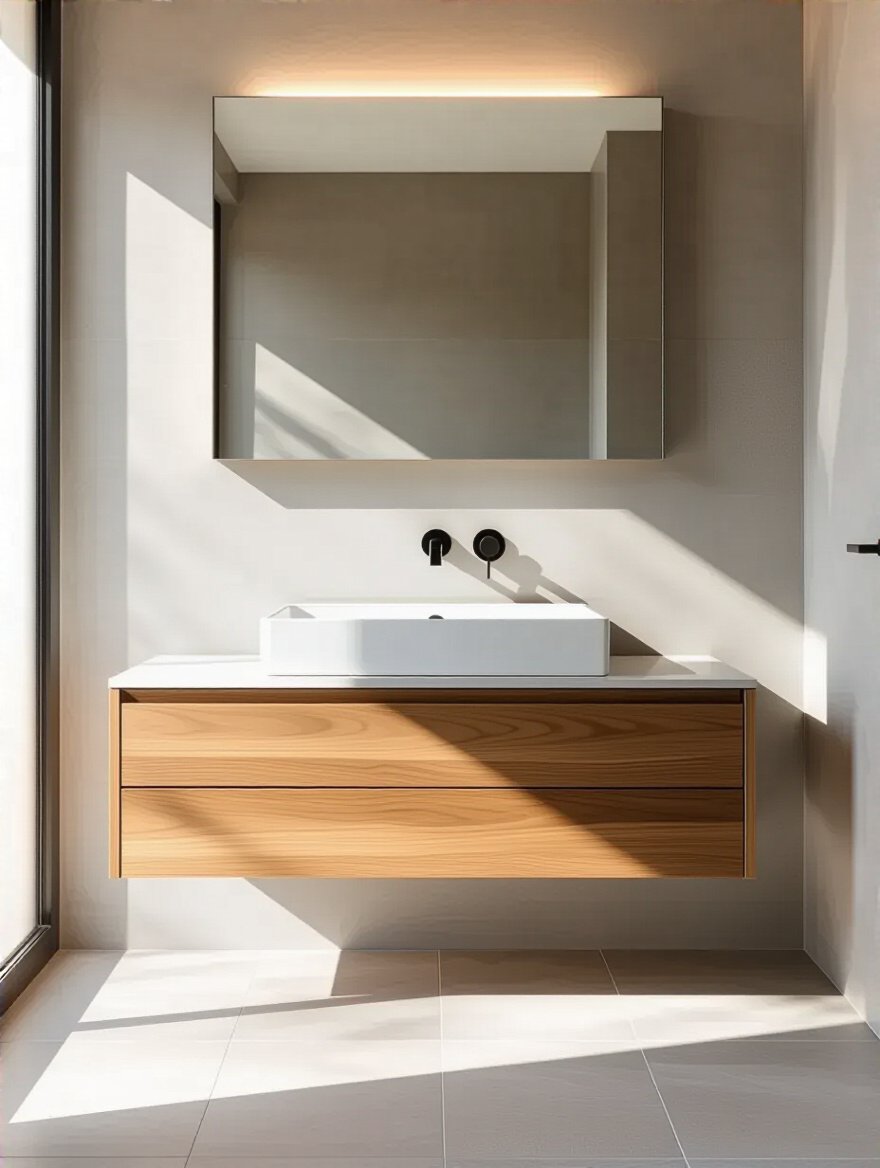
Here’s the shortcut you need: instead of a “floating” vanity, look for a “furniture-style” vanity. This means a cabinet that stands on legs. You still see the flooring underneath it, which creates that same sense of spaciousness, but the piece itself has the detail, warmth, and craftsmanship that suits an older home. Better yet, find a small antique dresser or console table and have a plumber and a carpenter convert it into a vanity. It’s a brilliant way to get a one-of-a-kind piece with real history that provides storage and style.
From the vanity, let’s move to the most important element for a good soak: the tub.
If you’re lucky enough to have an original cast-iron tub, for heaven’s sake, keep it. They are deeper, hold heat better than almost any modern acrylic tub, and are practically indestructible. I’ve seen so many people haul these beautiful relics to the dump, only to spend a fortune on a flimsy new one. The cost of having an original tub professionally reglazed is often less than buying and installing a cheap replacement. It’s the ultimate act of preservation and, frankly, it’s just a better product.
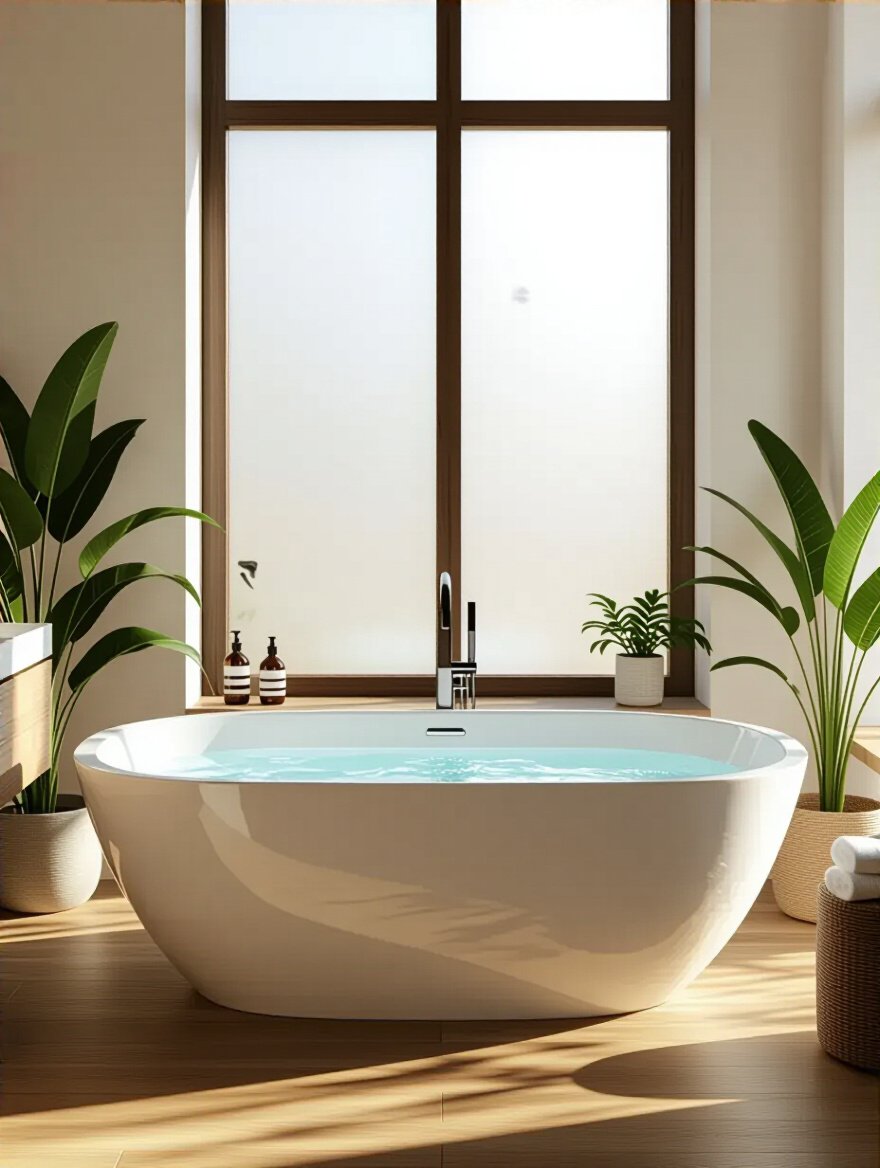
If the original is gone or damaged beyond repair, the mission is to find a new tub that honors the spirit of the old one. This doesn’t mean you’re stuck with just one option. A classic clawfoot tub is beautiful as a freestanding statement piece. For a tub/shower combo built into an alcove, look for a simple, deep cast-iron or enameled steel tub with clean lines. The key is to choose a style with a sense of permanence and substance, avoiding overly sculpted or trendy shapes that will look dated in a few years.
Next, a fixture that’s small but has a huge impact on the layout: the toilet.
The internet might tell you a wall-mounted toilet is the secret to saving space. And technically, it can save you a few inches. But I have to confess, this is a pet peeve of mine. Installing one in an old house is a major surgical procedure. You have to build out a new, thicker wall to house the tank, which often means losing the inches you were trying to gain, and it involves cutting into original framing and plaster. It’s a huge intervention for a minor reward, and it rarely looks right.
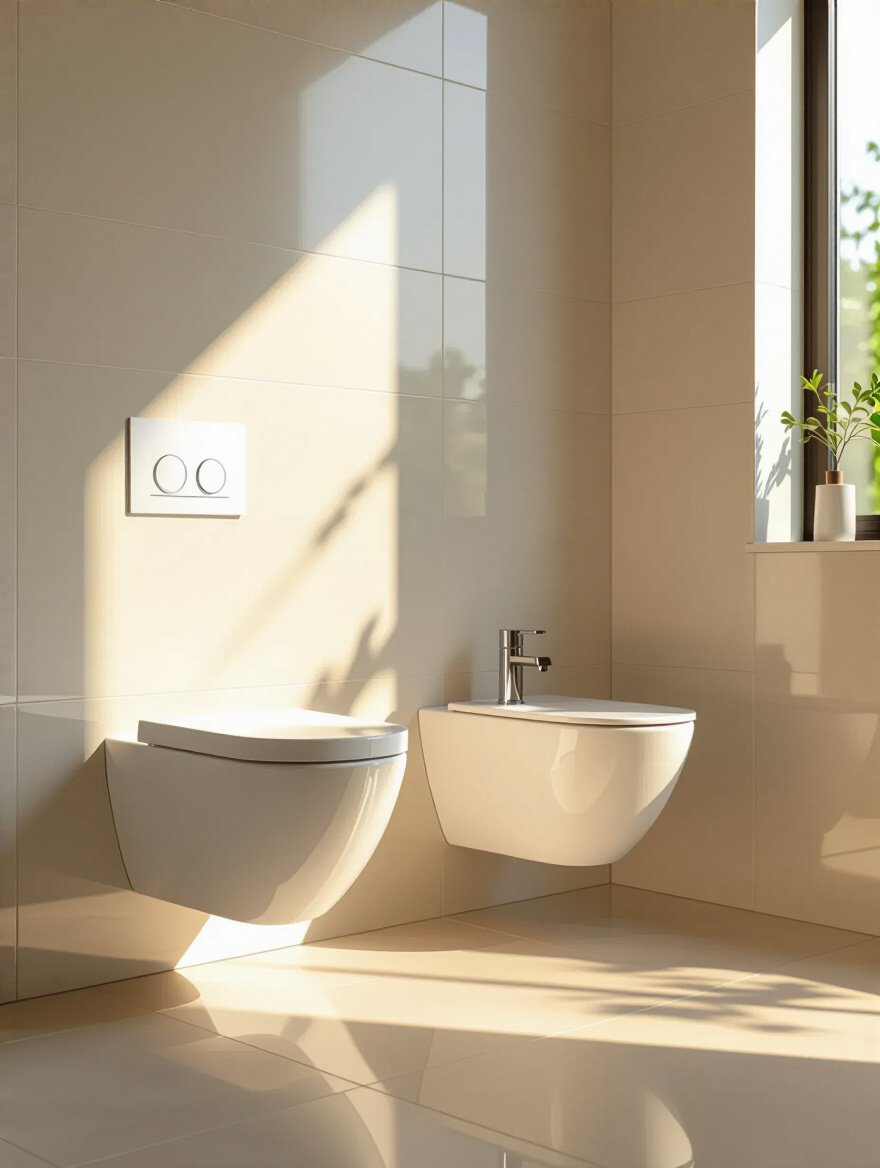
The smarter, more respectful approach is to find a compact, historically appropriate toilet. Many manufacturers make “round front” bowls instead of “elongated” ones, which can save you crucial inches in a tight spot. Look for models with classic details, like a traditional-looking tank lid and trip lever. You can achieve a clean, efficient layout without resorting to a fixture that feels like it belongs in a commercial airport. It’s about finding the most elegant solution, not the most aggressive one.
And speaking of elegant solutions, nothing is less elegant than a door that constantly bashes into the toilet or vanity.
This seems so simple, but it’s the thing everyone gets wrong. I watched a client spend tens of thousands on a beautiful renovation, only to realize the new, wider vanity meant the bathroom door could only open 75% of the way. It’s a daily annoyance that undermines all the other beautiful choices. In an old house, doorways are often narrow and strangely placed. Mapping out the swing of the door should be the very first thing you do on a floor plan.
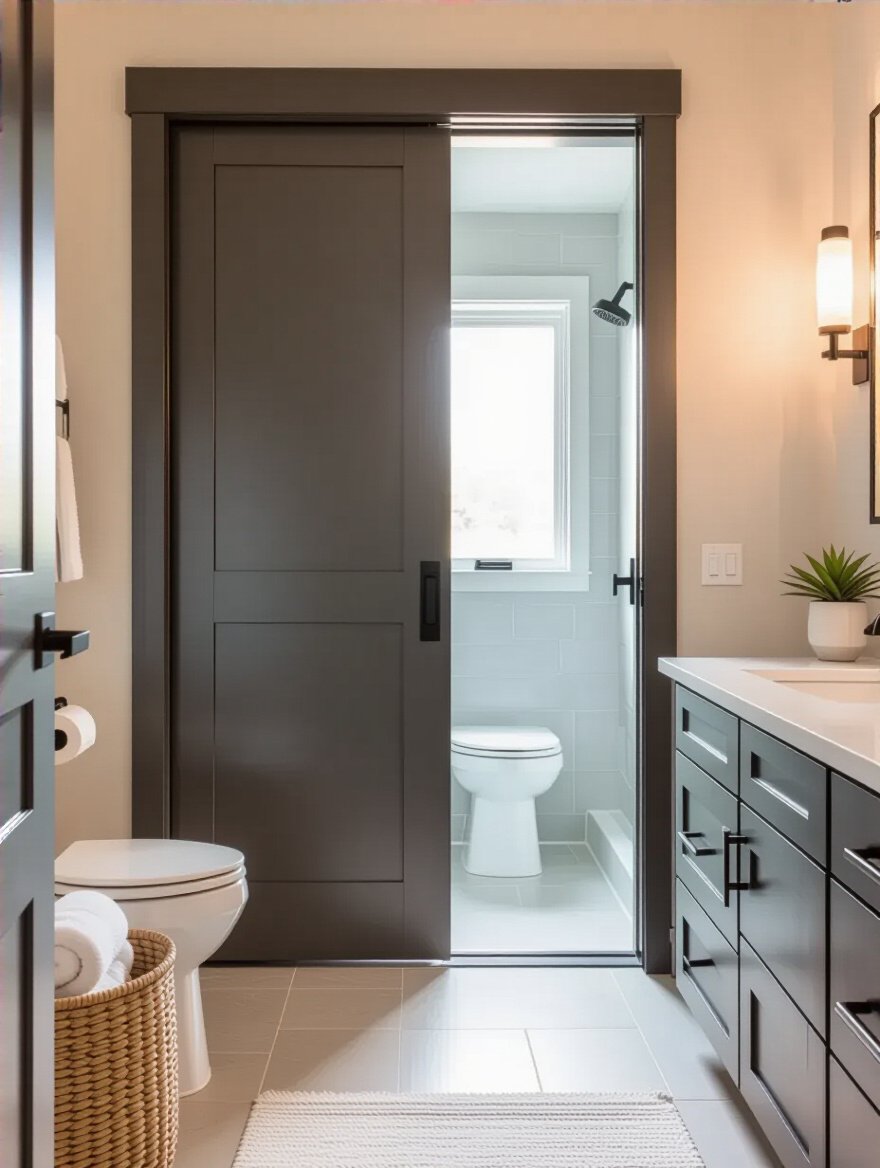
The noise you hear is all about pocket doors. And yes, a pocket door is a great space-saver. But installing one means demolishing an entire section of original plaster and lath wall—a wall that might have beautiful, old-growth wood studs inside. Before you do that, consider a simpler solution: can the door swing outward instead of inward? It’s a simple change that can free up a massive amount of interior real estate. If that’s not possible, then you can weigh the pros and cons of a pocket door. Just know what you’re sacrificing to get it.
Once the layout is settled, the fun begins. But choosing materials for a historic bathroom isn’t about what’s trendy. It’s about choosing materials with integrity—ones that feel like they could have been there all along, even if they’re brand new.
Before you do anything else, look down. If you have original tile—hexagonal, basketweave, pinwheel, simple squares—you have won the architectural lottery. The number one mistake people make is tearing this out because it’s “old.” That tile was set in a thick mortar bed, and it has likely outlasted every subsequent floor covering in the house. It’s a treasure. Your first, second, and third option should be to have it professionally cleaned and repaired.
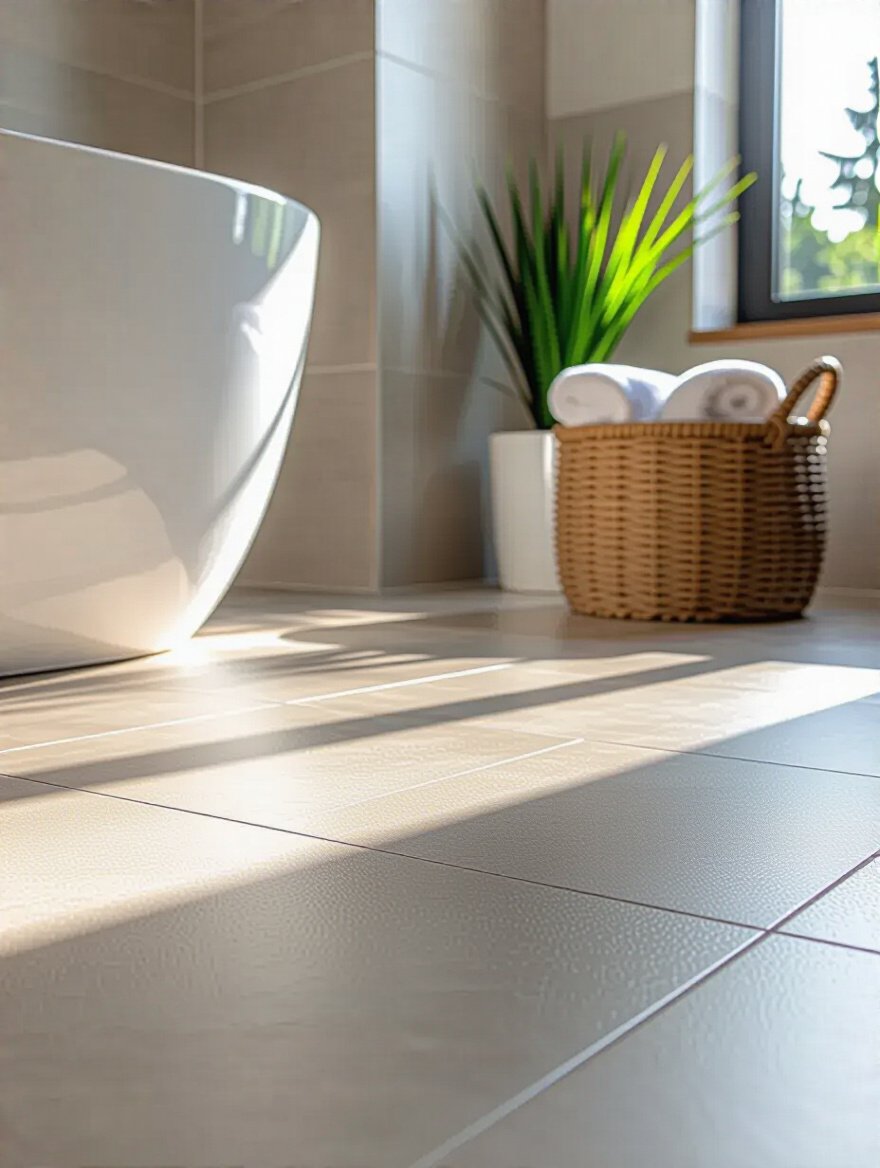
If the original floor is gone or damaged beyond saving, your job is to channel its spirit. Don’t put down wood-look vinyl planks; it’s a lie, and your house knows it. Instead, choose a new tile that respects the home’s era. Ceramic and porcelain hexagonal tiles, penny rounds, and classic black-and-white patterns are widely available and timeless. These smaller tiles, with their increased number of grout lines, also offer excellent slip resistance, which is a practical bonus. It’s an authentic look that’s also safer.
From the floor, we look to the walls, where you can make a huge impact.
You don’t need wild, trendy patterns to make a statement. The most beautiful and enduring bathrooms use classic materials in thoughtful ways. The go-to champion for a historic bathroom wall is, and always will be, simple subway tile. It was popular in the early 20th century for its clean, hygienic properties, and it remains popular today because it’s a perfect, versatile backdrop. Lay it in a traditional brick pattern, or for a slightly more modern-but-still-classic look, stack it vertically.
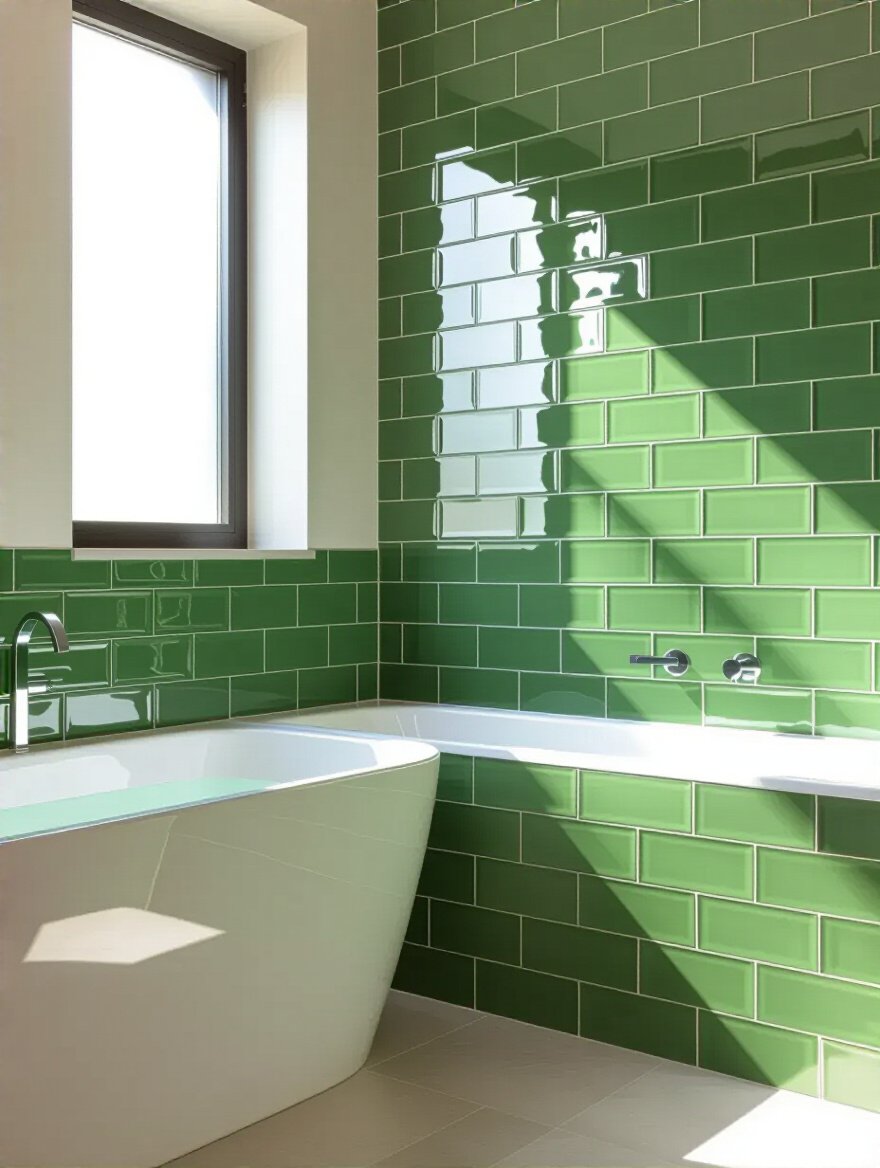
Another fantastic, historically accurate option for the walls is beadboard paneling. Installed on the lower half of the wall and capped with a simple chair rail, it adds texture, character, and a layer of protection. Painted in a durable semi-gloss, it’s perfectly at home in a bathroom. What you want to avoid are huge, large-format tiles. They have very few grout lines, which might seem easier to clean, but their scale is all wrong for the proportions of an older room. It’s the small details and textures that create character.
Let’s talk about the jewelry of the room: the metal finishes.
Everyone seems paralyzed by this. “Can I mix metals?” The corporate speak says to pick two, maybe three, finishes and stick to them. It’s not bad advice, but it misses the point. In a historic home, you have the opportunity to use finishes that have life in them. My absolute favorite is unlacquered brass. It’s a living finish that starts out bright and shiny and develops a deep, rich patina over time. Every faucet handle, every doorknob tells a story of use. It’s beautiful.
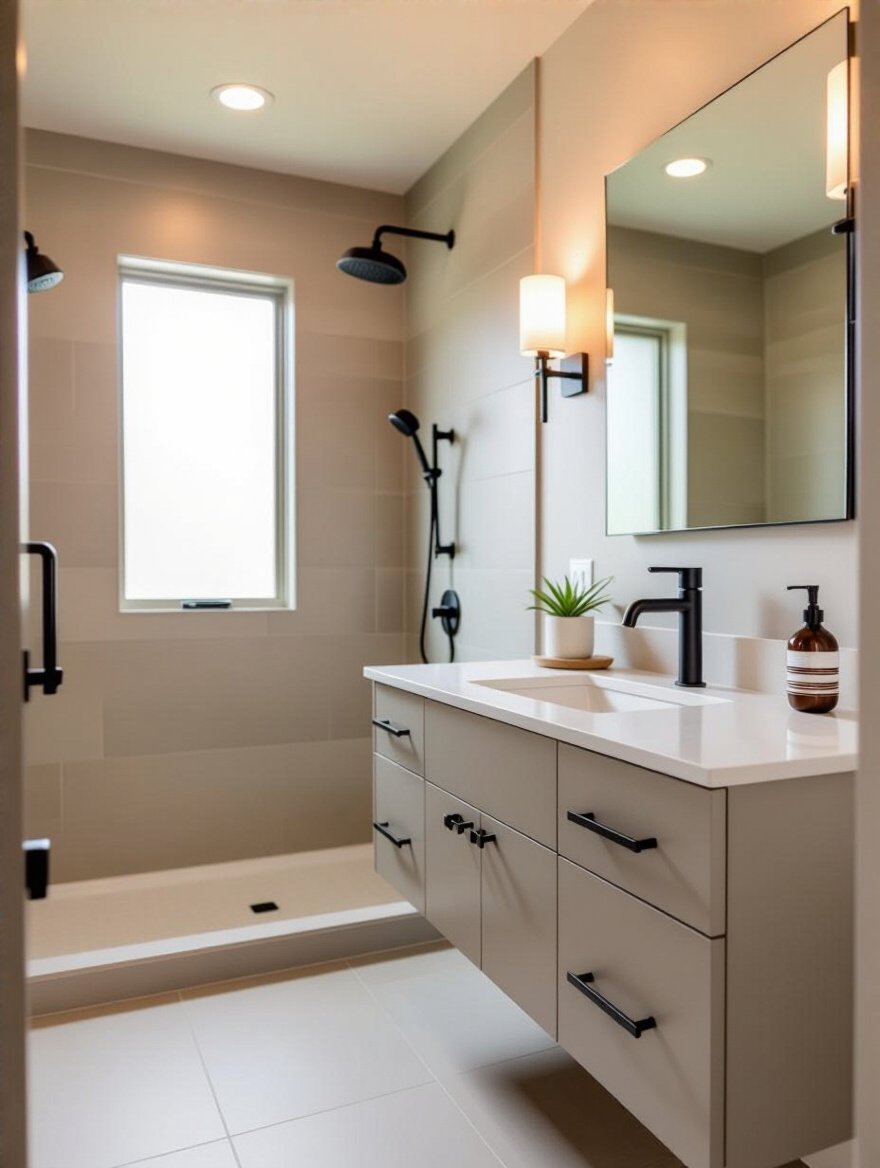
If the living-finish look isn’t for you, polished nickel is a fantastic choice. It’s warmer than chrome and was incredibly popular in the 1920s and 30s. What you should avoid is the cheap, trendy stuff. That matte black faucet might look great on Pinterest, but I’ve seen countless versions that chip and scratch within a year, revealing the cheap metal underneath. Stick with classic, high-quality finishes that have stood the test of time.
To complement those beautiful finishes, let’s bring in some natural warmth.
Older homes are filled with natural materials—real wood, real stone, real plaster. Your bathroom should be no exception. The easiest way to do this is with your vanity countertop. Marble is the classic, timeless choice. Yes, it can etch and stain. I don’t see that as a flaw; I see it as character, a record of life lived. If you can’t handle the patina, consider soapstone. It’s non-porous, darkens beautifully over time, and feels incredible to the touch.

For wood, think about that furniture-style vanity we talked about. A beautiful oak or walnut piece can be the star of the room. You can also bring in warmth with a simple wooden stool next to the tub or some open shelving made from reclaimed wood. These materials connect the bathroom to the rest of the house and prevent it from feeling sterile or clinical. They add a layer of soul.
The right materials are nothing without the right colors to tie them together.
Forget the “color of the year.” Your home already knows what colors it wants. Go to any major paint manufacturer’s website and look for their “historical colors” collection. These palettes are researched and curated to be authentic to specific architectural periods. This is your ultimate shortcut. You’ll find beautiful, soft, complex colors that have a richness you just don’t get from whatever gray is currently trending.

Look for muted greens, soft blues, creamy whites, and warm grays. These colors create a serene backdrop and work beautifully with natural materials like wood and stone. Test your top choices on the walls and look at them at different times of day. The light in an old house can be unique, and a color that looks perfect on a paint chip might fall flat on the wall. The goal is to create a palette that feels both fresh and like it could have been chosen a hundred years ago.
Now let’s tackle another piece of questionable modern advice: tile size.
There is a pervasive idea that large-format tiles make a small room feel bigger. I’m here to tell you that this is, at best, a half-truth. In a small, historic bathroom, oversized tiles often just look… oversized. They dwarf the room and call attention to its compact dimensions. The sleek, seamless look they create is fundamentally at odds with the layered, detailed character of an older home.

The real way to create a calm, spa-like feel is by using appropriately scaled tile and paying attention to detail. A floor of one-inch hex tile or two-inch squares creates a beautiful, textural field. Using a matching grout color can minimize the busyness, giving you a serene, unified surface without sacrificing the appropriate scale. The luxury here comes from quality and cohesiveness, not from sheer size.
Next up, a surface that sees a lot of action: the countertop.
I get it. Life is busy. People want low-maintenance materials. And the industry will shout “Quartz!” from the rooftops. It’s durable, it doesn’t stain, it’s easy. It’s also, to my eye, a bit lifeless. It’s an imitation of stone, and in a house full of authentic materials, it can feel a little hollow. I’m not saying you should never use it, but you should know what your other options are.

As I mentioned, marble and soapstone are fantastic choices if you can embrace their character. But if you want something truly durable that still has historic credibility, look at granite—specifically, honed or leathered granite. A simple black granite with a matte finish can be a stunning, practical, and period-appropriate choice that feels more substantial and authentic than a patterned quartz. It’s about finding the intersection of practicality and integrity.
You can have the most beautiful materials in the world, but if you can’t see what you’re doing and there’s clutter everywhere, the room will never feel serene. This is where modern functionality really meets historic charm.
The single overhead “boob light” is the enemy of good bathroom design. It casts harsh shadows and makes everyone look terrible. Layered lighting is the answer, and you can absolutely do it in a historically sensitive way. First, you need task lighting. This means flanking your mirror with a pair of beautiful sconces. Find fixtures that match your home’s era—simple and schoolhouse-style for a Craftsman, or more ornate for a Victorian. Placing light at face level is the single most important thing you can do.

Then, you can add your ambient (general) light. This can be a beautiful period-appropriate flush-mount fixture in the center of the ceiling. For an extra layer, you can use a couple of very discreet, small-aperture recessed lights over the shower or toilet, but they should be supplemental, not the main event. The goal is to have multiple sources of light you can control to create a bright space for getting ready or a soft glow for a relaxing bath.
And with that light, you’ll want to be able to find everything you need.
Older houses are champions of built-in storage. They have linen closets, ironing board cabinets, and clever little nooks everywhere. We need to bring that spirit into the bathroom. The dead space between wall studs is your secret weapon. You can have a carpenter build a custom recessed medicine cabinet that sits flush with the wall. In the shower, a tiled niche is a much more elegant solution for holding shampoo bottles than a rusty metal caddy.

I once worked on a 1910 foursquare where we found an unused cavity behind the bathroom wall that was once part of an old chimney flue. We opened it up and built a floor-to-ceiling linen cabinet that was only 10 inches deep but held every towel in the house. Look for these hidden opportunities. It’s about making storage feel like an integrated part of the architecture, not something you bought and put in the corner.
Now, let’s talk about the easiest way to make a room feel bigger and brighter.
This is the oldest trick in the book for a reason. A large, well-placed mirror can visually double the size of a room. The key in a historic bathroom is to choose the right kind of mirror. Forget the giant, frameless sheets of glass that contractors love. Look for a mirror with a beautiful frame—either a salvaged antique find or a new one with a classic profile.

Another beautiful, timeless detail is a beveled edge. It catches the light and adds a layer of elegance and finish. And if you can, hang your mirror on a wall where it will reflect a window. This will bounce natural light all around the room, making it feel brighter and more alive. It’s a simple move that has a massive impact.
Making sure that light is efficient is just as important.
LEDs are a modern marvel, but you have to use them correctly. The biggest mistake people make is choosing the wrong color temperature. The default at most hardware stores is a cool, bluish “daylight” bulb (5000K). This light is harsh and sterile, and it will make all the beautiful, warm materials in your historic bathroom look cold and uninviting. This is an absolute deal-breaker.

The shortcut is simple: you must buy bulbs that are 2700K, often labeled “soft white” or “warm white.” This color temperature mimics the warm glow of an incandescent bulb and is the key to creating a cozy, welcoming atmosphere. It will make your wood look richer, your nickel warmer, and your own reflection much more flattering. It’s a tiny detail that makes all the difference.
Now that everything’s illuminated, let’s get it organized.
This goes hand-in-hand with finding hidden niches. When you’re planning your vanity, think beyond a simple cabinet. Could you extend it wall-to-wall? Could you add a “tower” cabinet that rests on the countertop for extra vertical storage? This is what I mean by built-in. It’s cabinetry that looks like it was designed specifically for the space because it was.

I’m a huge fan of incorporating drawers over simple doors in a vanity. Drawers bring the contents to you, so things don’t get lost in the dark recesses of a deep cabinet. Have your cabinet maker include custom dividers for small items. The more you can plan for specific storage needs, the less likely you are to end up with a cluttered countertop. This is the difference between a bathroom and a sanctuary.
One final lighting trick can make all the difference in setting the right mood.
If I could only make one lighting upgrade in any bathroom, this would be it. Installing dimmers on all your light sources is a non-negotiable. It’s an inexpensive change that gives you complete control over the atmosphere of the room. It allows you to have bright, clear light when you’re getting ready in the morning and a soft, gentle glow when you’re winding down with a bath at night.

It’s the ultimate secret weapon for turning a functional space into a luxurious one. There’s nothing more jarring than needing to use the bathroom in the middle of the night and being blinded by a full-strength overhead light. A dimmer allows you to have just enough light to see without shocking your system. It’s a small, invisible piece of technology that vastly improves the experience of the room.
Finally, let’s talk about the layers that make a bathroom feel truly special—the touches of comfort and personality that transform it into your personal retreat.
The tech world wants you to have a mirror that tells you the weather and a toilet that plays music. I’m going to tell you to resist. Most smart home “innovations” for the bathroom are gimmicks that will feel dated in five years. The best technology is the technology you don’t see.

Here’s what actually matters: a high-quality, ultra-quiet ventilation fan connected to a humidity sensor. It will turn on automatically when the shower is running and turn off when the moisture is gone. This protects your plaster walls and woodwork without you ever having to think about it. The other game-changer is the smart thermostat for the feature we’re about to discuss next. That’s where you should put your tech budget.
Of course, not every personal touch has to be high-tech.
A bathroom is a room like any other, and it deserves art! This is your chance to add a dose of personality. It doesn’t have to be an expensive oil painting. It could be a simple framed botanical print, a collection of vintage black-and-white photos, or a beautiful ceramic object on a shelf. Just make sure it’s framed well to protect it from moisture.

And every bathroom is better with a plant. Many plants, like ferns, orchids, and snake plants, thrive in the humidity of a bathroom. A touch of green brings life and organic texture to a room full of hard surfaces. It’s a simple, inexpensive way to make the space feel cared for and complete.
Next, a modern luxury that can be adapted for a classic space.
A huge, square, 16-inch rain showerhead descending from the ceiling might look out of place in a 1920s bath. But you can still get that luxurious, all-encompassing spray. The trick is to look for a showerhead that is simply a larger version of a classic design. Many heritage-focused brands make beautiful 8- or 10-inch showerheads with a traditional bell shape, available in finishes like polished nickel or unlacquered brass.

You get the wonderful, drenching experience of a rain shower, but the fixture itself looks perfectly at home. Paired with a thermostatic valve—which keeps the water temperature perfectly consistent, even if someone flushes a toilet elsewhere—it creates a truly spa-like experience that feels like an upgrade, not an anachronism.
And for the ultimate touch of unseen luxury, we look to the floor.
This is, without a doubt, the single greatest luxury you can add to a bathroom. It is completely invisible, so it doesn’t compromise the historical aesthetic in any way, but it fundamentally changes the feeling of the room. Stepping out of the shower onto a floor that is gently and evenly warm is an experience of pure comfort.

Radiant floor heat is also incredibly efficient. Because it heats the objects in the room (including you) rather than just the air, you feel warmer at a lower overall temperature. It also helps wet floors dry faster. If you are replacing your bathroom floor anyway, the incremental cost of adding an electric radiant heat mat is relatively small, but the return in daily comfort is immeasurable. It is the perfect, and I mean perfect, marriage of historic character and modern indulgence.
Creating a bathroom in an old home is a balancing act. It requires a bit more thought and a lot more restraint than a standard renovation. You are in a constant dialogue with the original builders, respecting their choices while gently updating the space for the way we live now. It’s not about following trends; it’s about building on a legacy.
By focusing on appropriate materials, a thoughtful layout, and invisible modern comforts, you can create a bathroom that is both a functional workhorse and a soul-soothing sanctuary. You can have the walk-in shower and keep the vintage character. You can have the storage and the sense of openness. You can add layers of luxury that enhance, rather than erase, the home’s original story. And in the end, you’ll have a space that adds immense value not just to your property, but to your daily life—a beautiful room you can be proud to be the steward of for years to come.